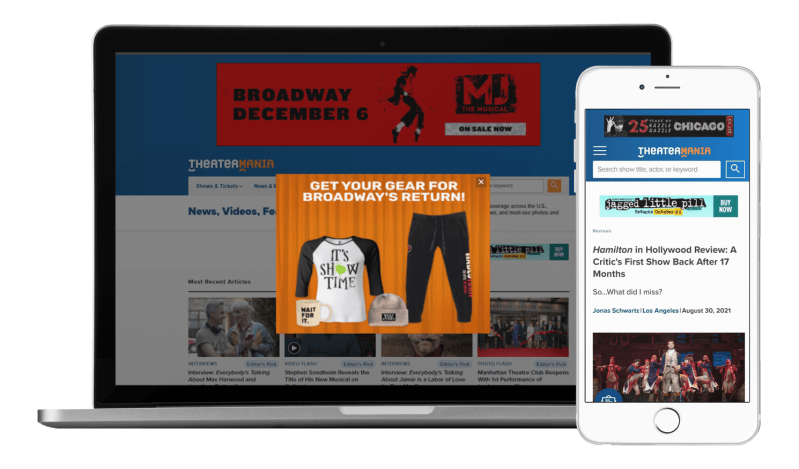By: Christina DiCillo
Now that theaters have begun to reopen for live indoor shows, every performing arts organization must have a thoughtful plan in place to promote their upcoming events.
Avoid the temptation of simply returning to business as usual by taking the ‘we’ve always done it this way’ approach to selling tickets online. Instead, be hyper-focused on the development of your online advertising campaigns that promote your events to your organization’s target audience.
With increasing operational costs, tightened marketing budgets and smaller teams, a positive return on ad spend (ROAS) for all your campaigns is more critical than ever.
Display Ad Sizes
With so many display ad units to choose from, it can get very complicated – and quickly. Understanding the basics of display advertising will help your organization promote your events online more intelligently and efficiently.
In short, there are a lot of ad sizes, and each has their own specifications, benefits and pitfalls.
The most common sizes are grouped together to make what the advertising industry calls Run of Site (ROS) ads. These ROS ads are an effective way to get a lot of volume, as the CPM is low, because they can appear in different places and pages on a website.
The most common sizes for ROS units are:
Mobile banner (300×50 or 320×50)
This is a mobile ad unit that appears only when a user is browsing the web on their mobile device. Because mobile traffic is more popular than desktop, it is a great unit for visibility, though the size means that there is not much room for pizzazz.
Medium rectangle (300×250)
This unit can run on desktop and mobile, making it versatile and attractive. Often considered the most popular ROS unit, this size allows a bit more flash than the smaller 300×50. It can also occupy the “persistent” spot and as such will scroll down the page with the user, making it even more effective.
Leaderboard (728×90)
This ad runs on desktop and appears on any guide pages. It is thin but allows a more prominent call to action than the mobile size. It can also occupy the top spot of the page if no billboard ads are available.
Half page (300×600)
This ad runs on desktop and appears on article pages. It is a great unit for higher impact advertising, allowing a bigger graphic and larger call to action. Like the 300×250, this can also occupy the “persistent” spot and follows the user down the page.
Higher Impact Opportunities
Desktop Billboard (970×250)
This ad unit appears only when a user accesses the desktop site. It has a high click through rate (CTR) and offers a great opportunity for bolder imaging and calls to action.
Mobile Billboard (400×100)
Larger than the mobile unit, this size adjusts to the user’s screen size and offers more flexibility to include images and copy.
Welcome Mat (640×480)
The highest impact single unit is the Welcome Mat. This ad unit presents visitors with a marketing message that they can’t ignore when they land on your website. Visitors have the option to click the ads’ CTA or to close it to continue to the website. This can be a static unit or a video, and has great attention gathering success.
Even higher impact? A homepage site skin can be used or be combined with other ad units to create a full, impressive takeover!
We’re here to help!
If you have additional questions about online ads, we’re happy to help you. Please reach out to our team at advertising@theatermania.com.
Cost per thousand (CPM), also called cost per mille, is a marketing term used to denote the price of 1,000 advertisement impressions on one web page
